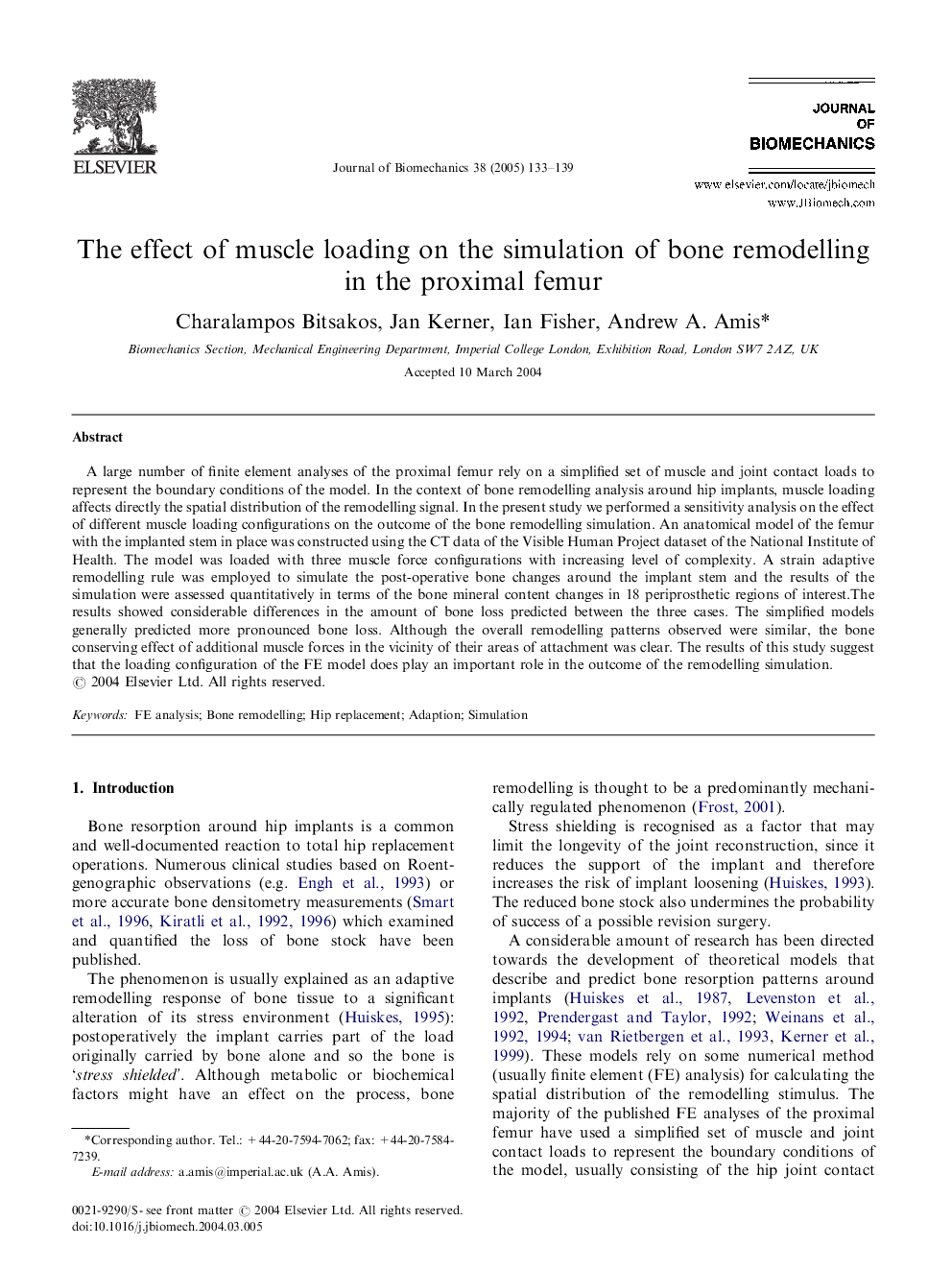| Article ID | Journal | Published Year | Pages | File Type |
|---|---|---|---|---|
| 10434565 | Journal of Biomechanics | 2005 | 7 Pages |
Abstract
A large number of finite element analyses of the proximal femur rely on a simplified set of muscle and joint contact loads to represent the boundary conditions of the model. In the context of bone remodelling analysis around hip implants, muscle loading affects directly the spatial distribution of the remodelling signal. In the present study we performed a sensitivity analysis on the effect of different muscle loading configurations on the outcome of the bone remodelling simulation. An anatomical model of the femur with the implanted stem in place was constructed using the CT data of the Visible Human Project dataset of the National Institute of Health. The model was loaded with three muscle force configurations with increasing level of complexity. A strain adaptive remodelling rule was employed to simulate the post-operative bone changes around the implant stem and the results of the simulation were assessed quantitatively in terms of the bone mineral content changes in 18 periprosthetic regions of interest.The results showed considerable differences in the amount of bone loss predicted between the three cases. The simplified models generally predicted more pronounced bone loss. Although the overall remodelling patterns observed were similar, the bone conserving effect of additional muscle forces in the vicinity of their areas of attachment was clear. The results of this study suggest that the loading configuration of the FE model does play an important role in the outcome of the remodelling simulation.
Related Topics
Physical Sciences and Engineering
Engineering
Biomedical Engineering
Authors
Charalampos Bitsakos, Jan Kerner, Ian Fisher, Andrew A. Amis,
